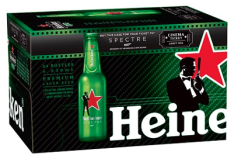Heineken aims to break free from the six-pack as marketer promises big things in 2016

Heineken fears hipsters can’t carry a case on their scooters
The opening of Heineken House, a new specialist bar at Sydney Airport due to open later this year, is stage one of a push by the brand to cement itself as the premium beer choice for Australian drinkers.
But according to Andrew Campbell, the brand’s Australian marketing director, Heineken has even bigger plans – from changing how the beer is served in bars to how consumers can buy it at bottle shops.
Campbell told Mumbrella that brands were having to completely rethink their approach to the market to extend beyond 30-second TVC and a beer coaster in a bar.


They’ll need to change the taste first.
“We talk about the young adult consumer: they can’t actually fit two cartons of Heineken on their scooter anymore and they can’t carry it into their apartment in the city.”
Weak as ….. urban hipsters. I just get my babe on the back of the scooter and get her to hold a slab under each arm!
They’ll also need to start selling the real stuff that is brewed in The Netherlands. Not the Australian-brewed imitation. Or even worse – the UK brewed imitation. Yuck.